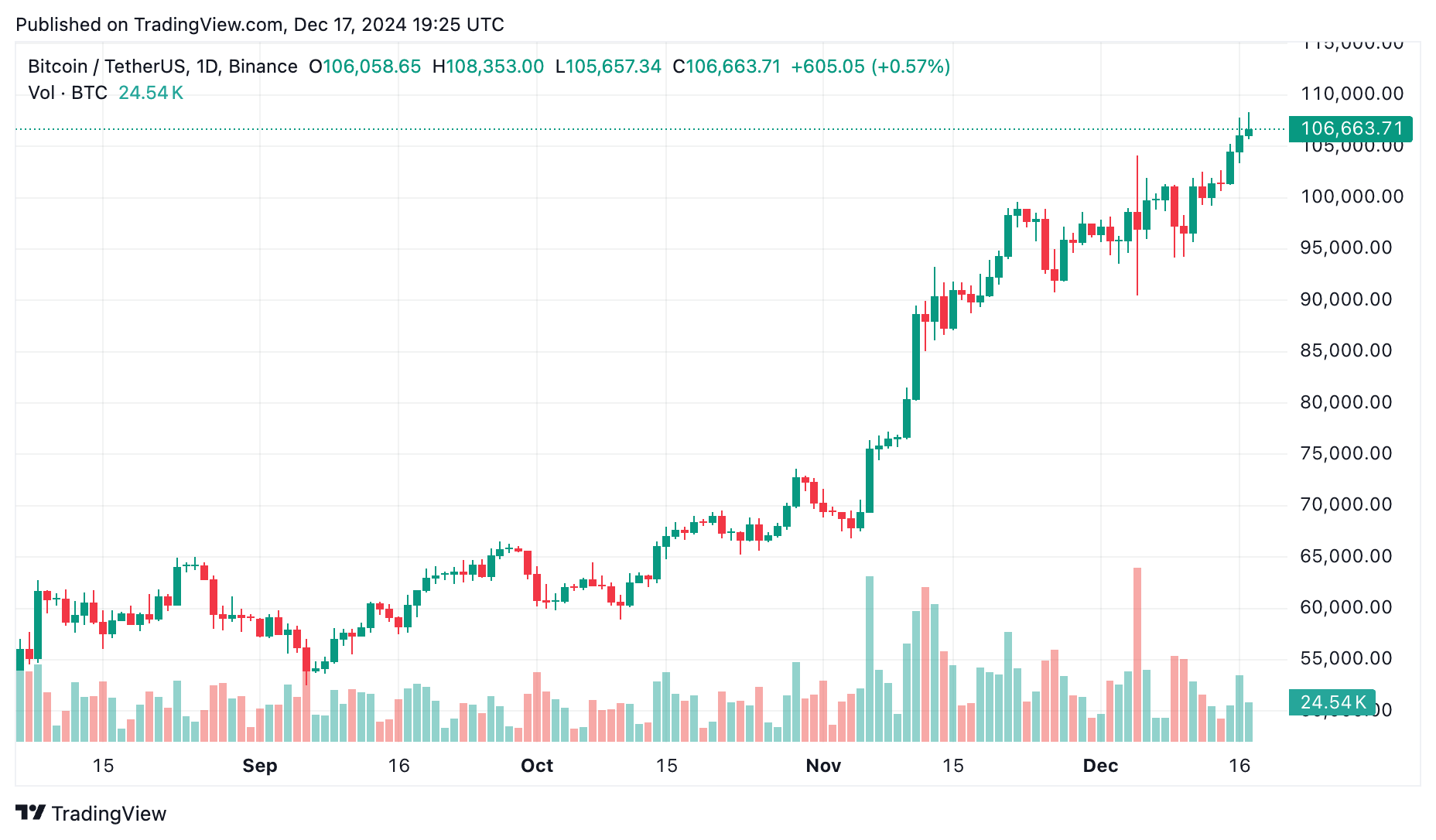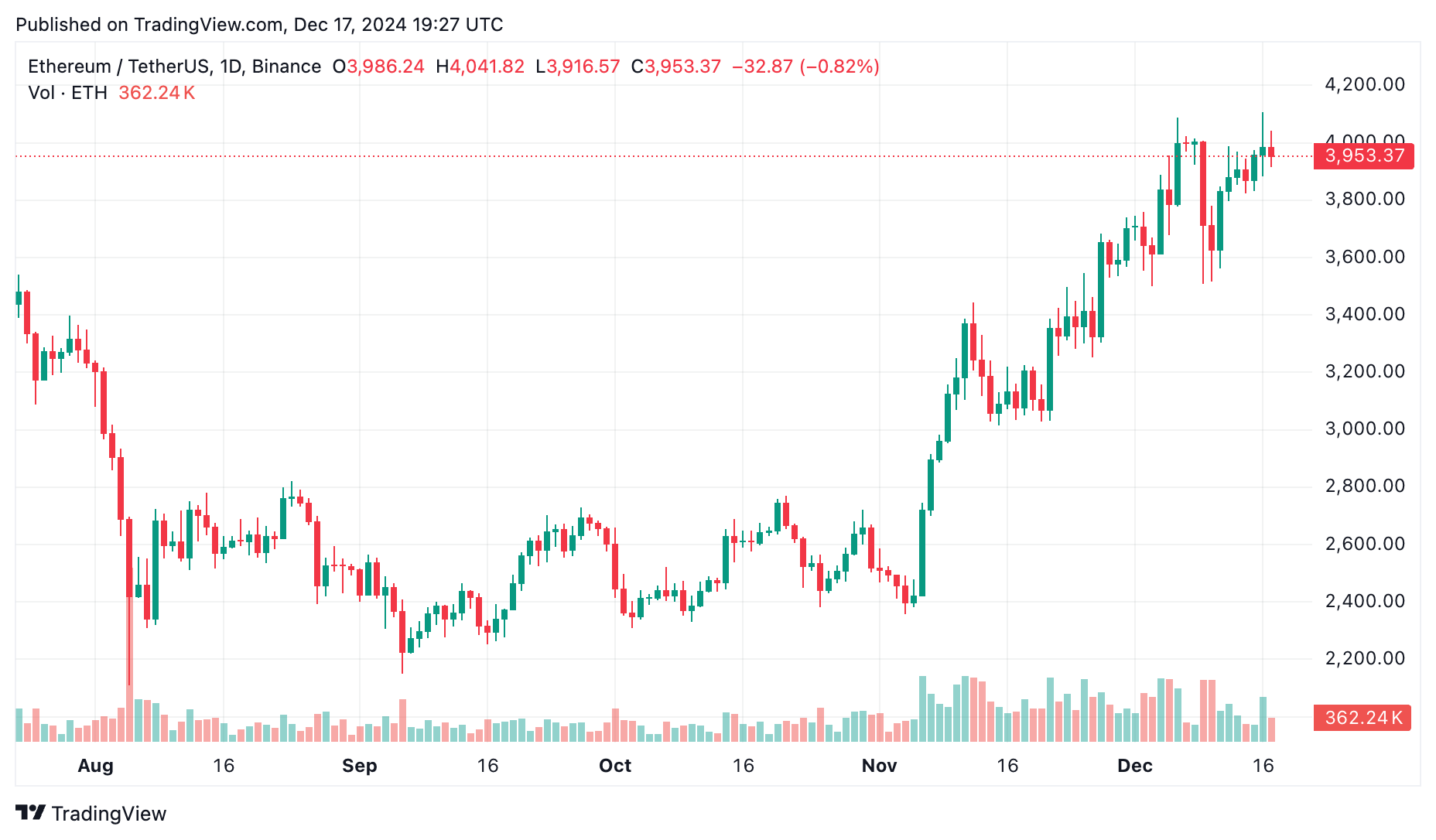Institutions are predicting that Bitcoin may reach $210,000 next
What’s behind Bitcoin’s historic rise to $108,000? From Trump’s speech to ETFs and MicroStrategy’s massive buys, could a major institutional supply squeeze be underway?
Bitcoin soars to new highs
Bitcoin (BTC) has once again stolen the spotlight. On Dec. 17, BTC climbed to an all-time high of $108,260, pushing its post-U.S. election gains to over 50%. As of this writing. 17, it is trading around $106,663 levels.

BTC’s rally follows President-elect Donald Trump’s proposal to establish a U.S. Bitcoin strategic reserve, a concept that has sparked widespread excitement across markets.
Trump’s announcement, made during his speech at the New York Stock Exchange on December 12, aims to position the U.S. ahead of global competitors in the digital asset space. He pointed to the need for America to “do something great with crypto” and to build reserves similar to its existing strategic oil stockpile.
The idea of a Bitcoin reserve isn’t entirely new. It was first introduced through the BITCOIN Act, championed by Republican Senator Cynthia Lummis, which envisions the U.S. acquiring 1 million BTC over the next five years to help address the growing $35 trillion national debt.
Another major factor driving this surge has been institutional activity, particularly from MicroStrategy, a firm synonymous with aggressive Bitcoin accumulation.
In the past week alone, MicroStrategy announced it had purchased $1.5 billion worth of BTC at an average price of $100,386 per coin. This recent acquisition brings its total Bitcoin holdings to 439,000 BTC, valued at around $47 billion.
The company’s Bitcoin strategy has paid off immensely, catapulting its market cap from $1.1 billion in 2020 to nearly $100 billion today.
Moreover, MicroStrategy’s inclusion in the Nasdaq 100 index, effective next week, is also expected to boost further demand for its stock as funds and ETFs rebalance their portfolios.
Meanwhile, Ethereum (ETH) hasn’t been left behind in this crypto frenzy. After a period of stagnation, ETH showed strong signs of life, climbing to a seven-day high of $4,106 on December 16—a 6% weekly gain.
While Ethereum has faced some minor retracement due to profit booking, it remains steady around the $3,950 mark as of this writing.

Let’s dive deeper into the key developments driving Bitcoin and Ethereum, analyze the macroeconomic indicators shaping this bull run, and see what experts believe could happen in the days to come.
Institutional powerplay
Bitcoin and Ethereum are both showing strong momentum, but the underlying story becomes clearer when we look at ETF inflows, liquidations, and futures open interest.
Spot Bitcoin ETFs have been on a tear this month. Since December began, they’ve seen consistent inflows every single day, adding over $5.16 billion as of Dec. 16.
These inflows have pushed the total assets under management for Bitcoin ETFs to $123 billion — a strong signal of confidence, especially from institutional investors.
Ethereum ETFs, however, tell a different story. Between their launch on Jul. 23 and Dec. 3, inflows were modest, reaching just $733.6 million. Compared to Bitcoin’s performance, this figure looks miniscule. But momentum has clearly shifted.
Since Dec. 4, Ethereum ETFs have seen consistent…




